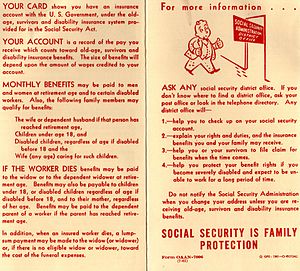The Early Retiree Reinsurance Program was supposed to reimburse employers for some of the health insurance claim costs for retirees through 2013 until the Affordable Care Act exchanges were in place. CMS has announced that $5 billion allocated for the program has run out and that claims incurred after 2011 will not be accepted. It appears the administrations earlier estimate how long the funds would last was off just about a year. Here is the CMS release:
The Early Retiree Reinsurance Program (ERRP) was established by section 1102 of the Affordable Care Act enacted on March 23, 2010. Congress appropriated $5 billion for this temporary program and directed the Secretary of Health and Human Services (HHS) to set up the program within 90 days of enactment. By law, the ERRP is scheduled to end when its resources have been used to pay claims. Due to the significant response among the employer community, the Administration’s budget released in February 2011 projected that the funds would last through fiscal year 2012, which started on October 1, 2011. The program ceased accepting applications for participation in the program on May 6, 2011. On November 18, 2011, CMS notified plan sponsors that total payments reached $4.1 billion. On December 9, 2011, CMS notified plan sponsors that $4.5 billion had been paid and issued further guidance informing plan sponsors that claims incurred after December 31, 2011 will not be accepted.
Where did the money go? It went to a wide variety of employers of all sizes, but interestingly, if you scan the list of recipients you will find that most of the money went to state and local governments, including school districts (reflecting their large numbers and generous early retirement programs). A few very large corporations such a Verizon, Prudential and Johnson & Johnson received sizeable checks as well.
The City of Minot in North Dakota has over 2000 plan participants and has received $112,933 in ERRP reimbursements. As a direct result of these reimbursements the City was able to reduce 2012 premiums by 17 percent.
And what will happen in 2013 when the premium increases will have to cover the shortfall created by artificially reducing premiums in 2012 in addition to the increases being generated over the next year? Wait until these organizations see a compounding of their premium increases in 2013, it will be like the middle class receiving a tax increase because the Social Security payroll tax is reinstated.
In the final analysis, what did the American tax-payer get for his money? The purpose of the ERRP was to encourage organizations to retain early retiree coverage. However, state and local government plans and large corporations, especially those heavily unionized, are very unlikely or completely unable to cease providing early retiree health care coverage, certainly not before 2014. So what we have is a transfer of federal (borrowed) money to the states, local government and mostly large corporations creating a windfall serving a very questionable purpose. It is true that some retirees also saw a small benefit in all this, but that too is temporary and any reduction in their cost will quickly disappear.
That $5 billion could have been spent in more productive ways.
Highest annuity rates - AnnuityRatesHQ.








Recent Comments